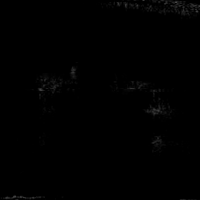
Anterior Eye Diseases
NIH R01 EY028755 - PI: Dr. David Huang
NIH R01 EY029023 - PI: Dr. Yan Li
The long-term goal of this project is to utilize newly available very high-speed optical coherence tomography (OCT) technology to guide surgical treatments of anterior eye diseases. Measuring aberrations in the optical surfaces of the cornea requires great precision. OCT is well known for its exquisite spatial resolution; but until recently it has not had sufficient speed to overcome the inherent biological motion of the eye and capture the shape of the cornea. The development of Fourier-domain (FD) OCT technology has made the requisite speed possible...(read more)

Functional and Structural OCT
NIH/NEI R01 EY023285 - PI: Dr. David Huang
Glaucoma is a leading cause of blindness in the US. The management of glaucoma is based on early detection, followed by careful monitoring to identify those with rapid disease progression and high risk for vision loss. This allows for the rational use of medical, laser, and surgical treatments. Current methods of assessing glaucoma and its progression have significant limitations. Visual field (VF) testing is relatively insensitive...(read more)


Pediatric Ophthalmology
Artificial intelligence assisted panoramic OCTA for Retinopathy of Prematurity
R01HD107494 PIs: Yifan Jian & J. Peter Campbell
Optical Coherence Tomography (OCT) and OCT angiography (OCTA) have proven the ability to detect subclinical disease, provide quantitative evaluation of disease progression, and improve outcomes in the leading causes of blindness in adults, age-related macular degeneration and diabetic retinopathy. Technological and practical limitations have limited the application of this technology in routine use for non-sedated children undergoing routine screening for retinopathy of prematurity (ROP), the leading cause of blindness in children. The proposed project will develop an ultra-high speed, handheld OCT system with GPU enabled real-time processing and artificial intelligence to improve the feasibility of panoramic ultra-widefield OCT/OCTA imaging in non-sedated neonates and evaluate the clinical utility of OCT-derived biomarkers in ROP.
The Invention of Optical Coherence Tomography
OCT Overview
Optical coherence tomography (OCT) is analogous to other range-finding techniques that use radio (RADAR), sound (SONAR), ultrasound and light waves. All these devices emit a wave toward the target object and detect the reflections. Delays of reflected waves provide information on the distance of the object from the device. Radio waves and ultrasound typically use pulsed radiations, permitting pulse delays to be measured directly with electronic timers. Because the velocity of light is very high (3 × 108 m/s), direct timing of optical pulses in optical time domain reflectometry (OTDR) can at best provide millimeter resolution. A variant of OTDR that uses femtosecond laser pulses and nonlinear cross-correlation detection can provide micrometer (μm) resolution, but is expensive and has relatively low detection sensitivity. Huang et al. incorporated transverse scanning and developed a cross-sectional imaging modality called OCT. In OCT (Fig. 1), the depths of sample reflections are measured indirectly by interference with a reference reflection. OCT provides both high detection sensitivity (photon shot-noise limited) and high resolution (higher than 10 μm). It is often implemented with fiber optics for ease of alignment, compactness, modularity, and stability. Fiber optic components are also relatively inexpensive, thanks to the high volume fiber optic communication industry.

The strength of OCT is its high resolution, which generally 10-100 times better than ultrasound, computed tomography, or MRI. The drawback is relative shallow penetration. Scattering quickly attenuates signal in turbid tissue, limiting the range to roughly 0.2 to 2.0 mm, depending on the tissue, wavelength and power used. Therefore OCT has been most important in the eye, where there is a transparent medium, and in situations where a probe could be used to deliver the imaging to the tissue of interest. OCT provides morphological information with near-histology resolution, which could, for example, measure internal retinal sublayers, identify the composition of atherosclerotic plaques, detect neoplasia and malignancy and identify brain structure.

Dr. David Huang, MD. PhD
The classic time domain OCT system is a Michelson interferometer. A fiber optic implementation is shown in Figure 1. The light source is usually a superluminescent diode (SLD) in the infrared. The SLD is compact, couples efficiently into a fiber, and has the requisite power and bandwidth for high sensitivity and resolution. The 50/50 fiber coupler splits the SLD input between the reference and sample arms. The reference and sample reflection are recombined at the coupler. The reference delay is scanned by moving the reference mirror or other device. The detector picks up a modulated interference signal when the reference delay coincides with the delay from a sample reflection. The interference signal is demodulated, digitized, and transferred to a computer for analysis and display. Each sample reflection produces a signal peak that is proportional to the strength of the reflection. The width of the peak is determined by the coherence length of the SLD light. The coherence length is inversely proportional to the spectral bandwidth of the SLD.
A recent development of OCT technique has shown that Fourier domain OCT (FDOCT) has a higher signal to noise ratio (~20dB higher) and imaging speed than time domain OCT. There are two approaches to FDOCT. The most common method is based on spectrometer, as shown in Figure 2. The light source and interferometer are similar to time domain OCT. But the detector is replaced by a spectrometer. Reference and sample arm light interfere in the fiber coupler, and the composite signal is dispersed by a spectrometer and detected by a line scan camera. With fast Fourier transform (FFT) of the interference spectrum collected by the camera, structure information can be obtained via the amplitude result. In FDOCT, mechanical scanning in the reference arm is not needed as it is in time domain OCT, and the sampling rate can be extremely fast.

